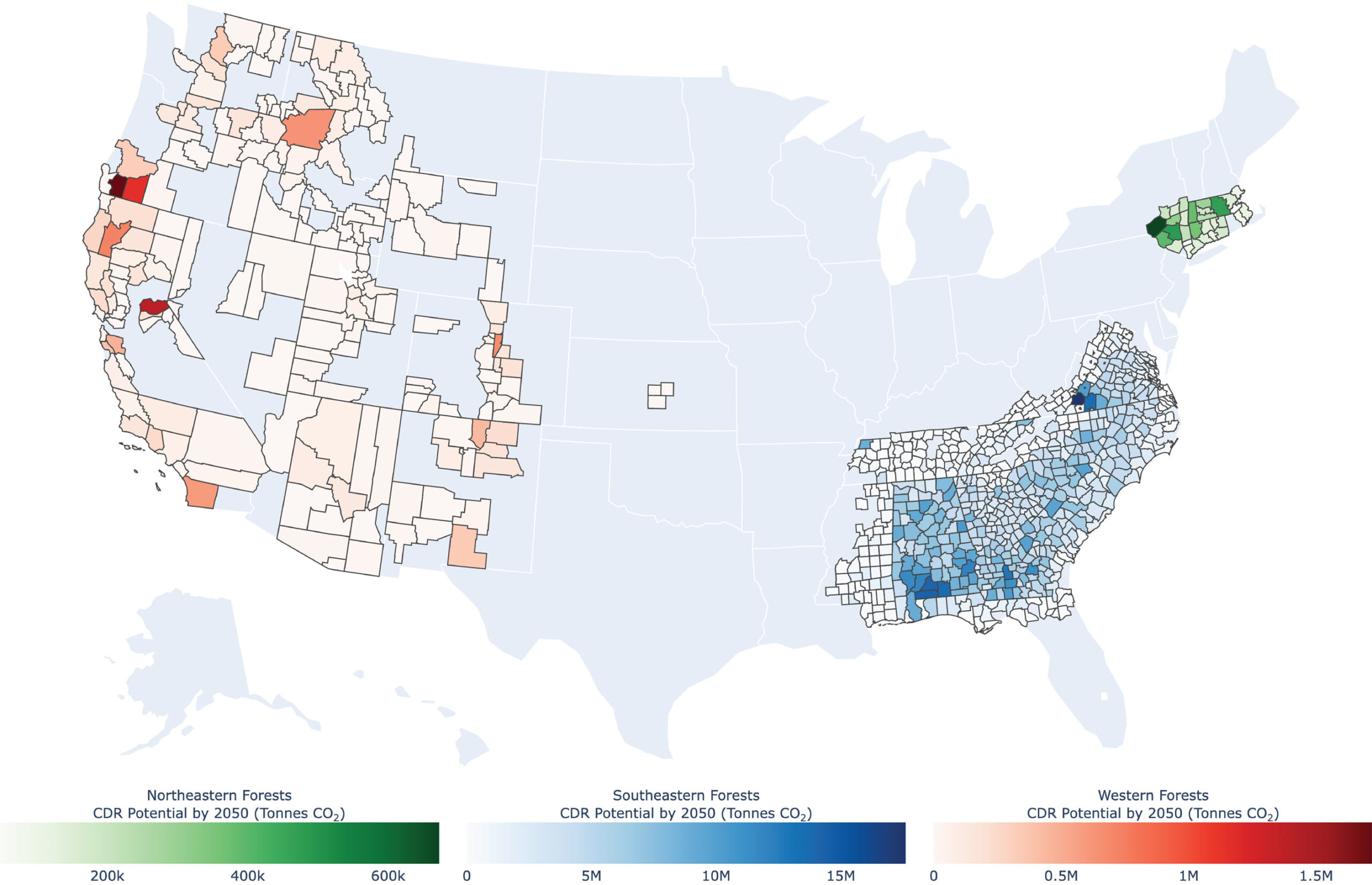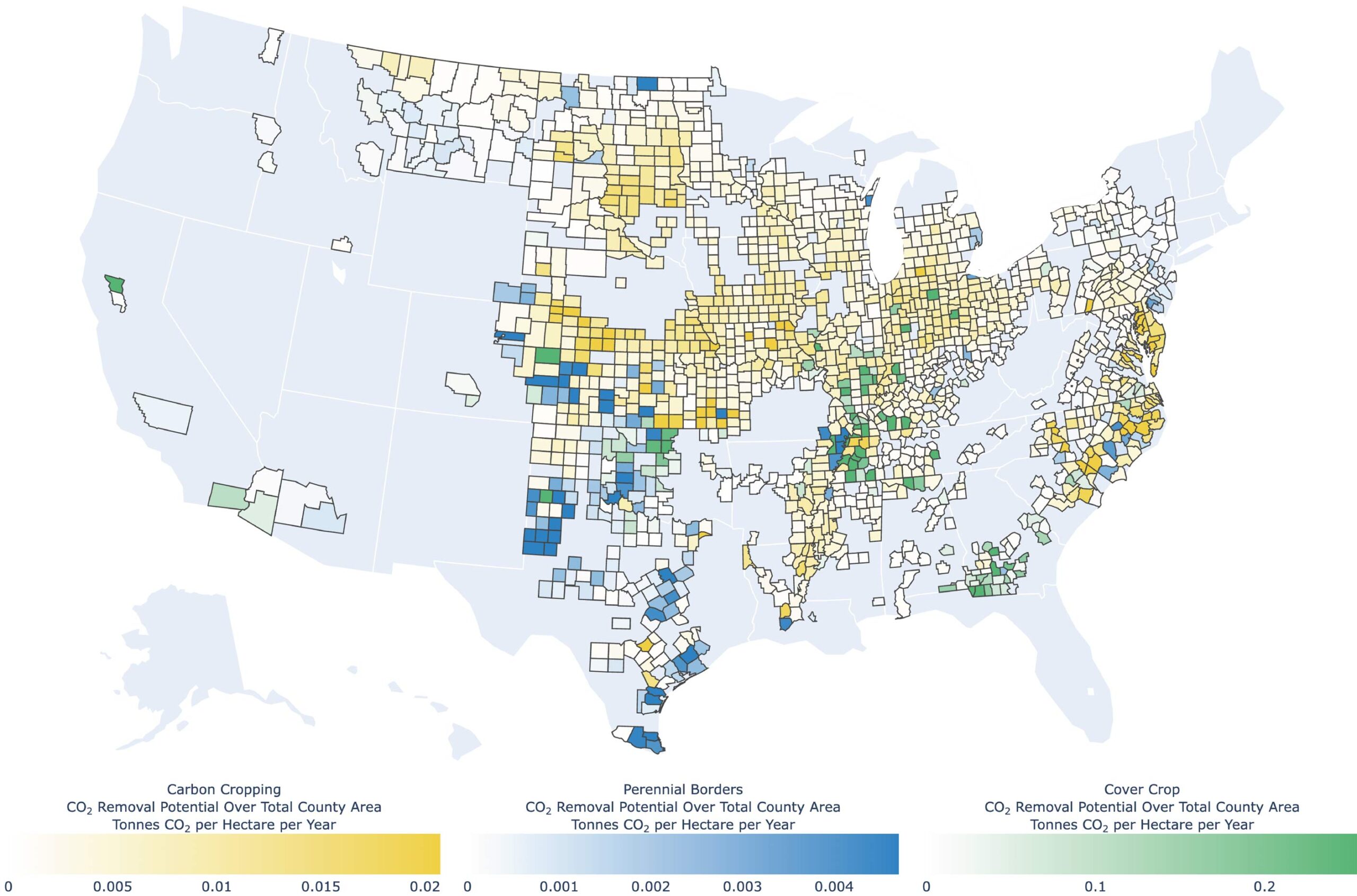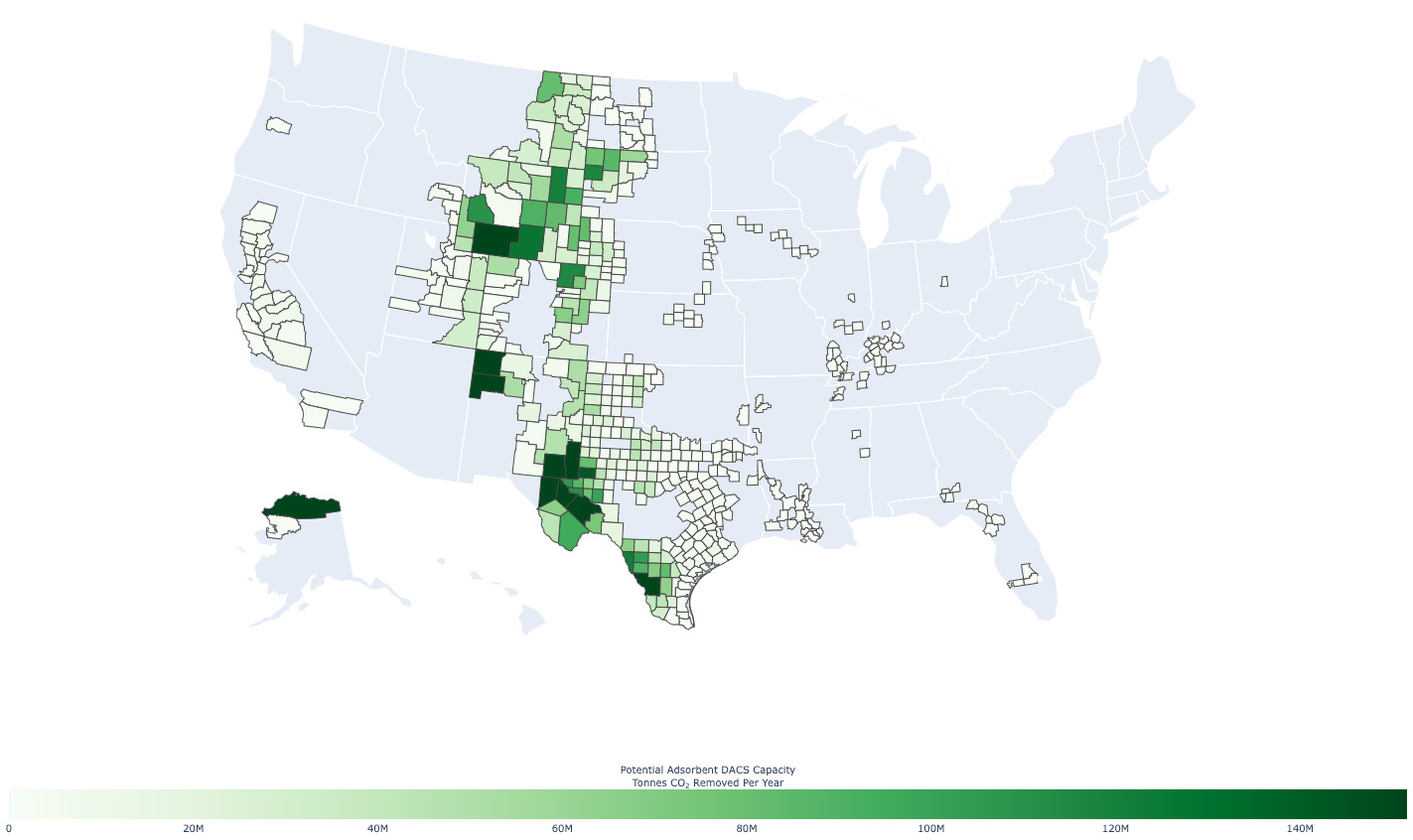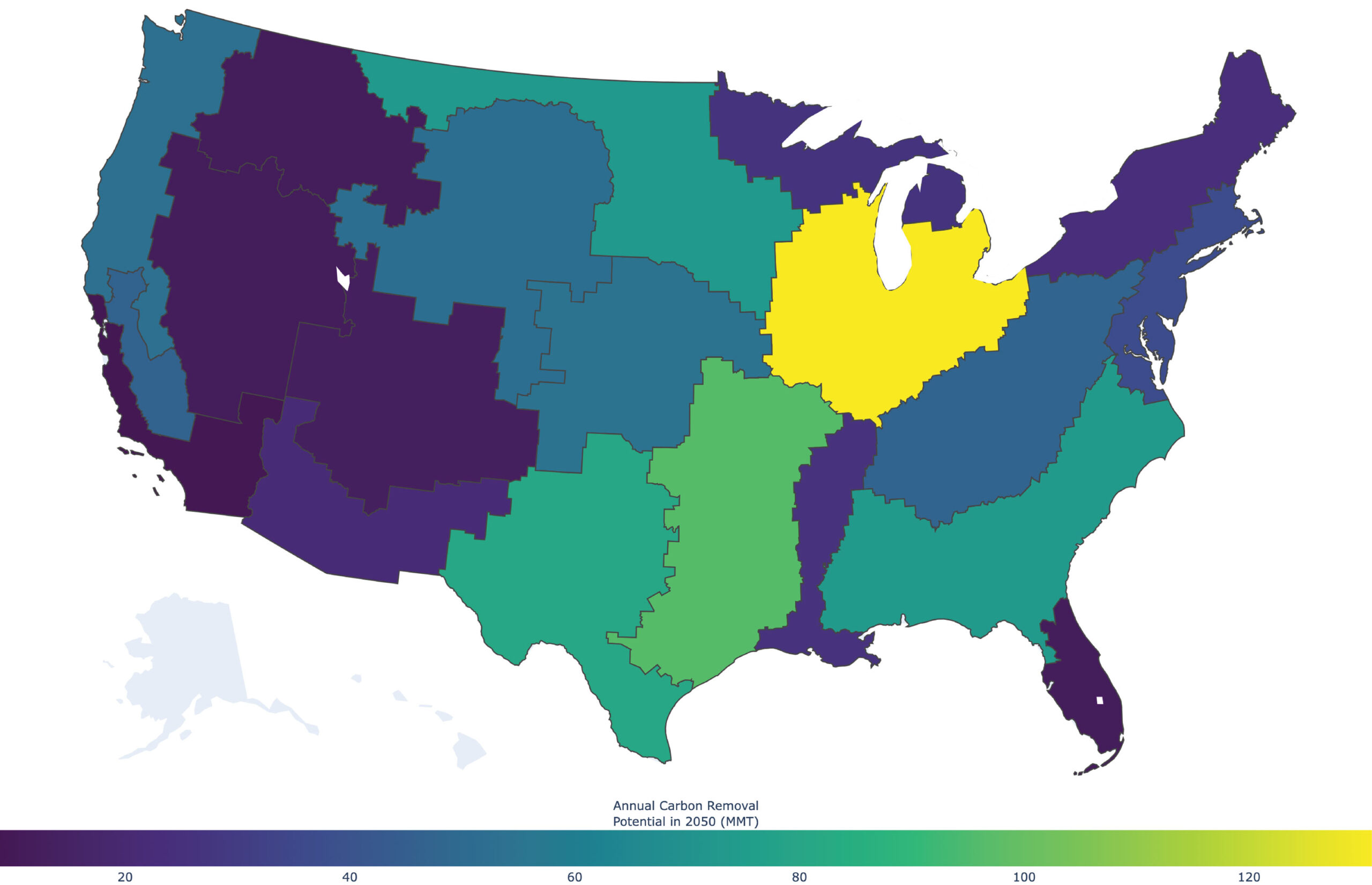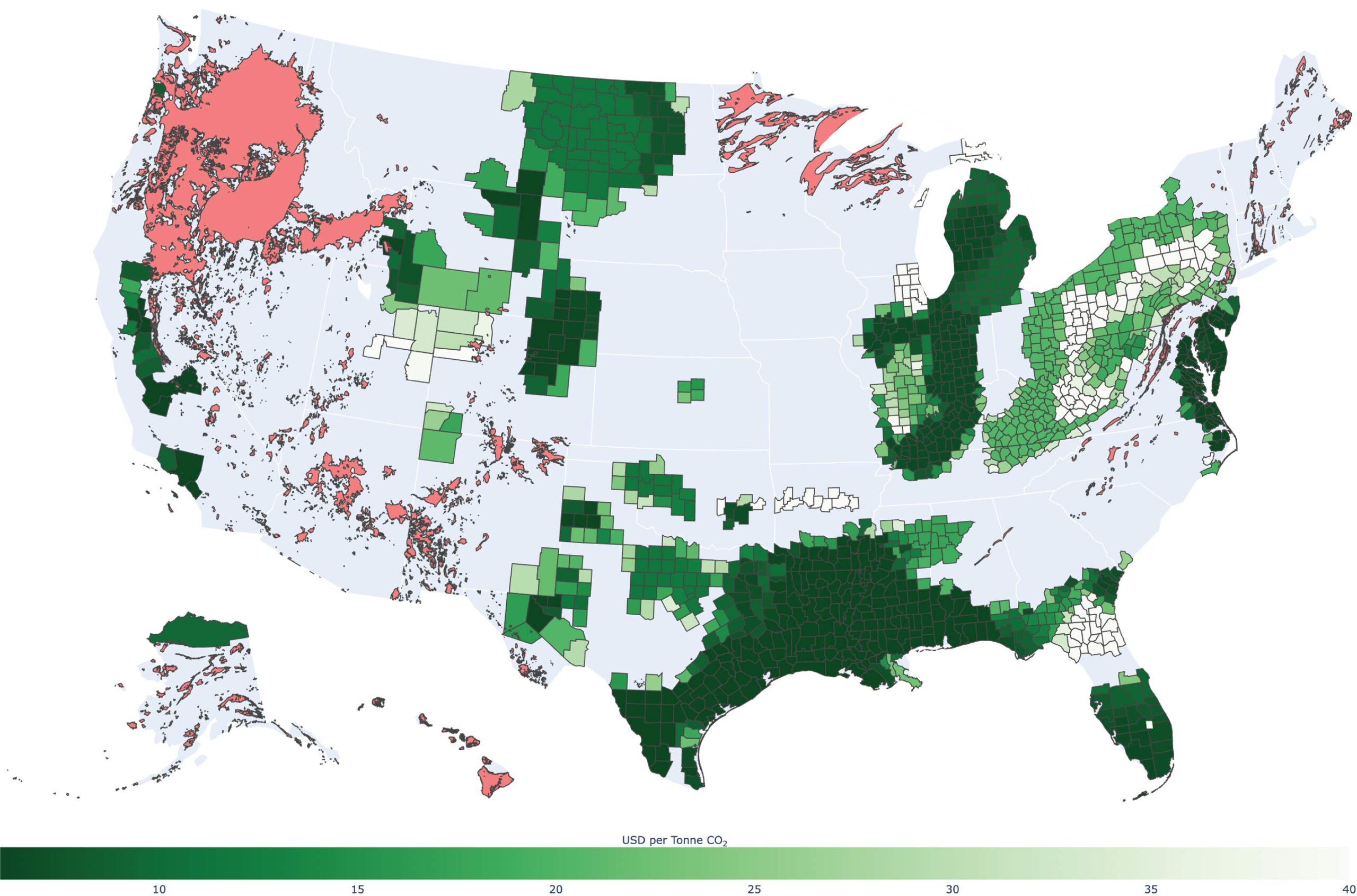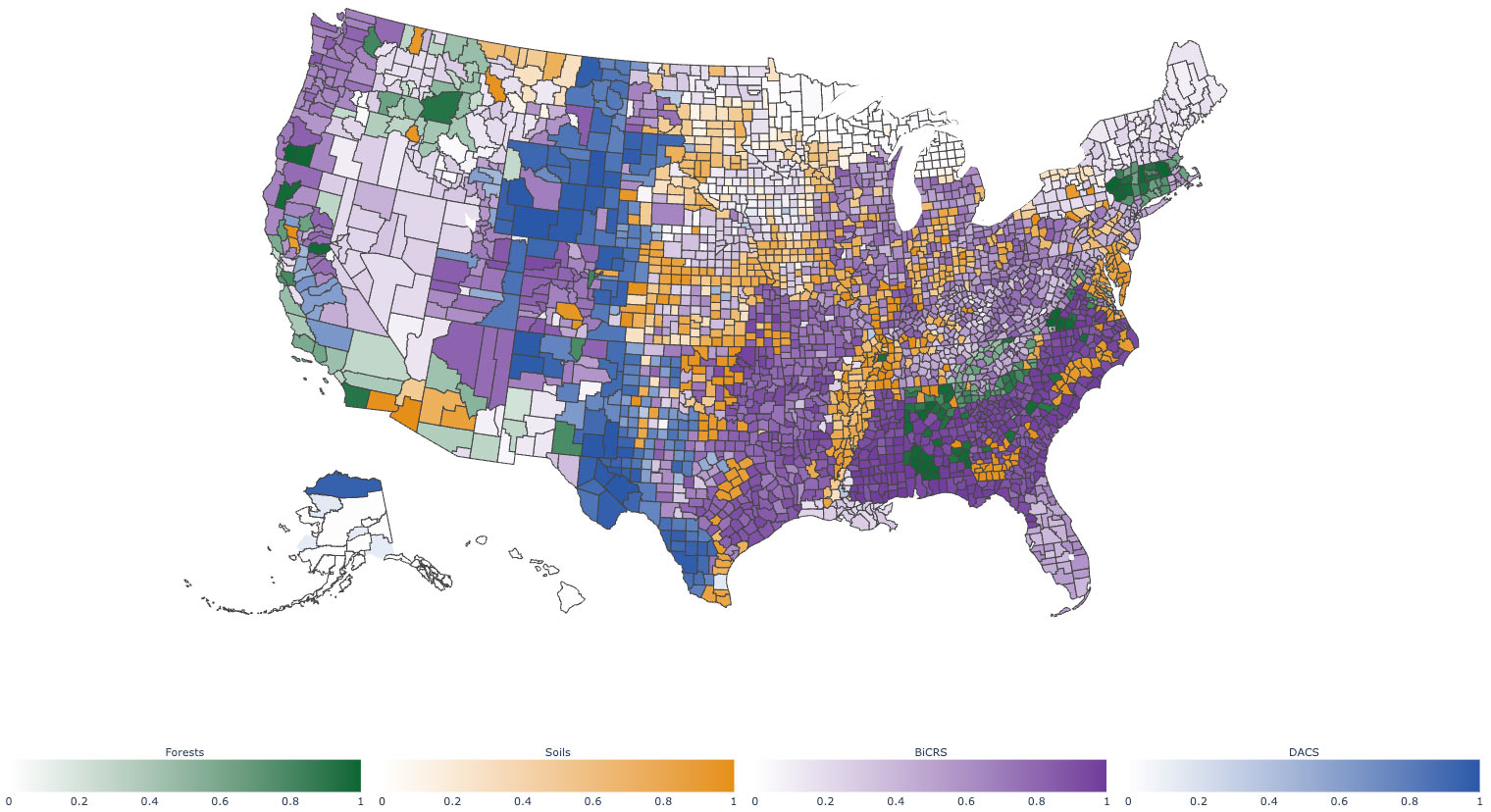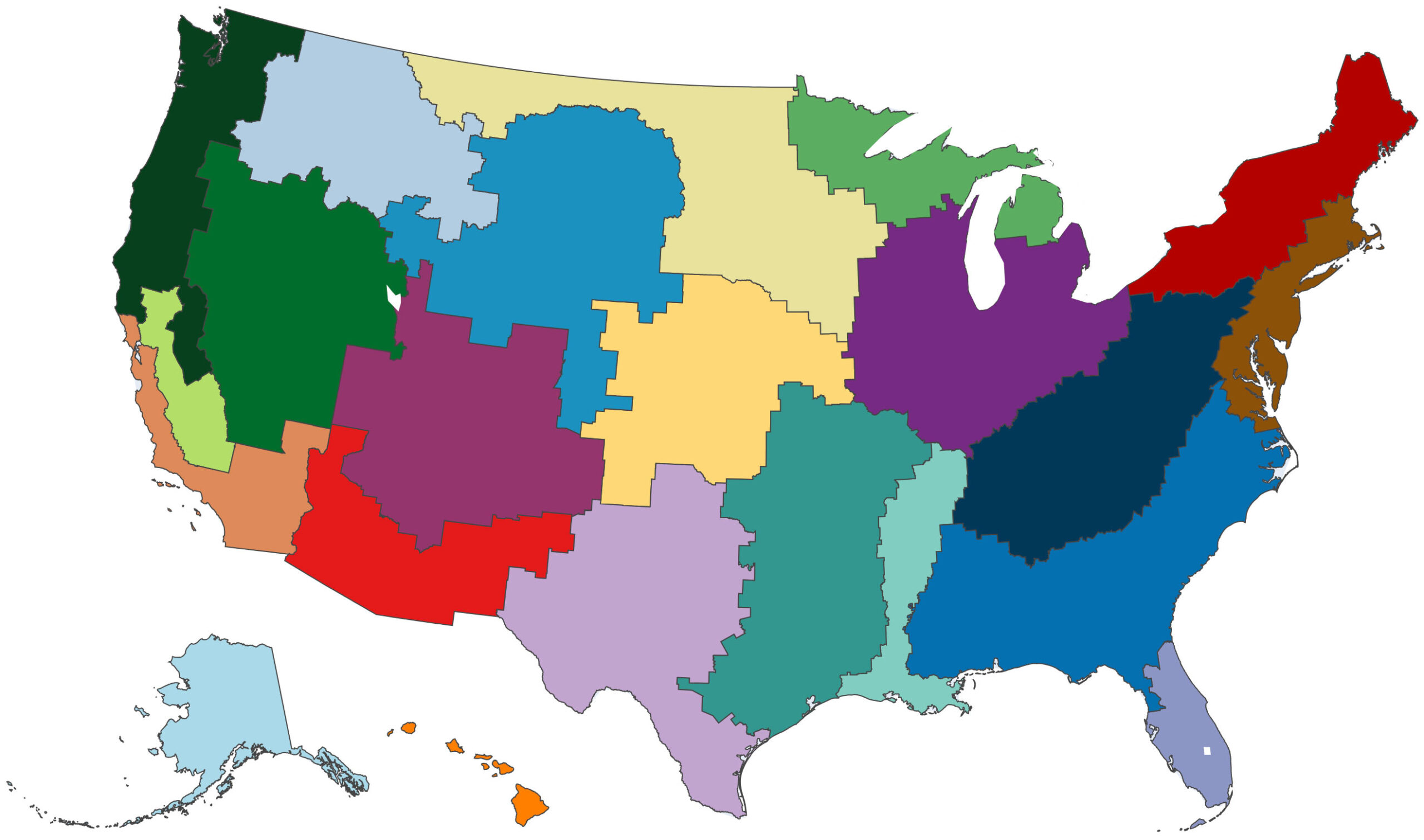OVERVIEW
There is an urgent need to remove carbon dioxide (CO2) from the atmosphere to ensure climate security and resilience. In 2022, the United States set a goal of developing carbon dioxide removal (CDR) pathways that will remove CO2 from the atmosphere and store it at the gigaton scale (at least a billion tonnes per year). Alongside the larger national goal of rapidly reducing current greenhouse gas emissions (GHG), CDR provides a vital option for achieving net-zero emissions by 2050.
The Roads to Removal (R2R) report is a national collaborative effort by more than 68 scientists, and 13 institutions that examines regionally specific opportunities to address the pressing issue of climate change and the urgent need to remove carbon dioxide (CO2) from the atmosphere and store it at the gigaton scale. R2R researchers evaluated various techniques for removing carbon dioxide (CDR) at the county level based on factors such as feasibility, capacity, impact, and cost. Chapters in the report include Forests, Soils, Biomass Carbon Removal and Storage (BiCRS) and Direct Air Capture (DAC), as well as the feasibility and costs of transporting CO2 and storing it underground. The report also examines the environmental and socioeconomic co-benefits and the significance of avoiding and reducing negative impacts on people and the environment.
FORESTS
CROPLAND SOILS
Increasing organic carbon stocks in cropland soils is a key strategy for soil-based carbon dioxide removal in the U.S. Croplands are already managed and cover a large area of land. Further, practices to enhance organic carbon are low-tech, immediately deployable, and can produce mutual benefits. These practices include: cover cropping, perennial field borders, and perennial carbon crops.
The R2R report’s county-level analysis examined the potential for cropland soil-based CO2 removal using biogeochemical models and an economic land-use decision model (taking into account the need for land for food production). Researchers considered social and environmental co-benefits, equity considerations, and factored in key uncertainties with the financial valuation of this method.
Through this analysis, researchers show that soil-based CO2 removal practices are inexpensive, and can be implemented right away to remove over 100 million cumulative tonnes of CO2 before 2050. While less durable than geologic storage, soil-based carbon storage can provide both a climate benefit and improved environmental outcomes. While less durable than geologic storage, doing so can provide a climate benefit. However, these practices require ongoing maintenance to keep stored carbon in the soil, making them vulnerable to management dependence.
DIRECT AIR CAPTURE
Removing carbon dioxide from the atmosphere through direct air capture (DAC) has the potential to eliminate billions of tonnes of CO2, but this process requires an increase in renewable energy resources as well, to avoid additional emissions. The amount of land required for renewable electricity generation also restricts the maximum capacity of DAC. However, there are regions in the US that have significant renewable energy potential, intersecting with the geologic formations required for CO2 storage, which make them ideal for DAC buildout.
Despite its potential, DAC is predicted to be a more expensive form of carbon dioxide removal than the other options identified in the R2R report. However, DAC can create carbon management jobs and help communities evolve from fossil fuel dependence. It is essential to thoroughly consider all emissions associated with DAC, particularly those from energy use, to accurately evaluate its carbon removal capabilities. DAC developers who use renewable electricity should also consider alternative uses for that electricity, such as decarbonizing local grids.
The Roads to Removal analysis found that some regions have more potential for DAC paired with renewable electricity, while others have a large potential for DAC paired with natural gas.
BiCRS / BIOMASS
Biomass Carbon Removal and Storage, or BiCRS, is a technique used to capture and store carbon dioxide by utilizing plants to absorb carbon from the atmosphere. Carbon is stored by transforming biomass into durable products or by capturing and storing the CO2 that is produced during biomass processing. BiCRS is regarded as a significant strategy for limiting global warming to 1.5°C by 2100, as indicated by integrated assessment models.
BiCRS has the potential to create income streams while also removing carbon by generating materials and energy products from biomass. However, BiCRS also presents certain risks, including land use change, which can displace natural ecosystems and food production, resulting in unforeseen climate impacts. Other risks include the complexity of the process, which necessitates cooperation between farmers, biorefinery operators, and carbon storage systems.
Because of the broad scope of BiCRS, the Roads to Removal report explores topics such as land use, biomass availability, transportation, conversion pathways, and biorefinery site selection in the United States.
GEOLOGIC STORAGE & TRANSPORTATION
Geologic storage plays a crucial role in removing carbon from the atmosphere, offering a means of long-term storage for CO2. Building on existing comprehensive research on this topic, Roads to Removal researchers conducted a new analysis to determine the distribution and estimated costs of geologic storage resources, and CO2 transportation methods (in order to get CO2 from where it’s captured, to where it can be stored).
The report found that pipelines and barges are the most cost-effective transport methods for regions that will see a lot of CO2 transport, but trucking is the most economical method to transport shorter distances.
The geologic storage analysis includes two new elements. First, it maps the “storage window” where sedimentary rocks are at the right depth to retain CO2 as a dense fluid and enable CO2 injection. Second, it factors in new costs such as how storage volume impacts land-leasing costs, characterization and monitoring expenses, and the benefits to communities. Additionally, the analysis estimates costs on a project basis, allowing developers to find suitable storage options for removal projects based on desired costs.
Over half of the US has potential for CO2 storage, mainly in well-studied areas in the Gulf Coast and dozens of inland basins. Costs vary depending on location and rock formations, with mean storage costs of less than $20/tonne in some areas and higher costs in others.
EQUITY & ENVIRONMENTAL JUSTICE
In quantifying the options for the United States to reach billion tonne scale of CO2 removal by 2050, it was clear that such purposeful investments at the national scale could spur socioeconomic and environmental changes nationwide. The net positivity of these changes, however, is different for each CO2 removal method, what resources a given county has, what challenges they are facing, and how their history may contextualize new projects.
To help policymakers, project developers, and communities assess trade-offs for each CO2 removal option available in a county and what projects may benefit them the greatest with minimal risks, the Roads to Removal team constructed an ‘EEEJ Index’ for each CO2 removal method. The EEEJ Index ranks each county’s likelihood to experience co-benefits with minimal risk for a given CO2 removal method. EEEJ Index values were then compared to the Center for Disease Control’s ‘Social Vulnerability Index’ to identify: (1) highly vulnerable counties that could especially benefit from environmental service co-benefits (e.g. water quality improvements) and (2) less vulnerable counties that may have capacity to become early leaders in innovative, engineered CO2 removal methods with outsized economic co-benefits.
Based on findings – including data on job creation, avoiding negative health impacts, and wildfire prevention – there are opportunities for customizing each county’s CO2 removal approaches to meet their local needs and distributing these benefits strategically across the country for maximal restorative and distributive justice potential.
REGIONAL OPPORTUNITIES
Roads to Removal researchers identified and explored the attributes of the 3,143 U.S. counties, and grouped them into 22 regions that present regionally specific opportunities and challenges for CO2 removal. These regions vary in terms of their geography, climate, biomass, economies, histories, and populations, and each has its unique resources that can contribute to achieving CO2 removal targets. Factors like carbon resource availability (i.e. biomass), renewable energy, equity, and environmental justice were examined for each respective county to develop this regional analysis.
As the map above illustrates, some regions have the potential to fully implement biomass-based carbon capture and storage at a large scale and low cost. Certain regions, like Western cities and Northeastern cities, generate a significant amount of carbon-rich waste that can be captured more efficiently. Across the United States, abundant forests and agriculture can provide enough biomass to meet the country’s CO2 removal goals with intentional management.
Overall, the report’s findings indicate that achieving the nation’s net-zero climate goals and higher quality of life in the United States requires cooperation between all regions.


